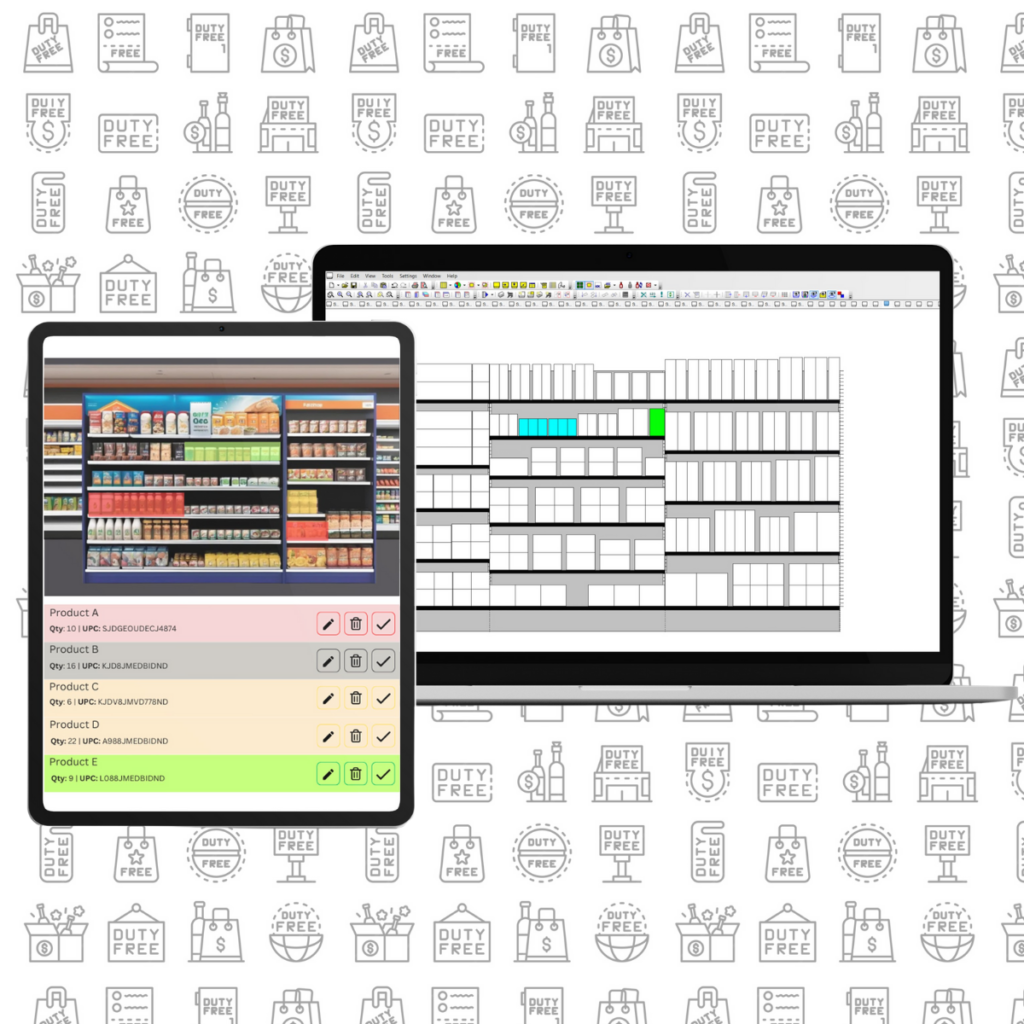Optimizing Airport Retail Management with Data-Driven Strategies

Airport retail management is a unique and complex field that blends the fast-paced environment of airports with the high expectations of travelers. With millions of passengers passing through airports annually, retail operators face the challenge of catering to a transient audience while ensuring smooth, efficient operations. The key to thriving in this space lies in leveraging data-driven strategies to optimize every aspect of retail—from store layouts to inventory management.
The global airport retailing market was valued at USD 34.34 billion in 2023 and is projected to reach USD 101.52 billion by 2032, growing at a compound annual growth rate (CAGR) of 12.8% over the forecast period (2024-2032). This growth is driven by increasing air passenger traffic worldwide, leading to higher spending on retail goods and luxury items. Airports are expanding retail offerings to enhance passenger experiences while capturing revenue from duty-free shops and specialty stores.
In this article, we will explore the core challenges of airport retail management and how innovative tools like planograms and data analytics can transform the shopping experience, increase profitability, and streamline operations.

Key Challenges in Airport Retail Management
- Limited Dwell Time Travelers typically have limited time to shop before boarding their flights. Unlike traditional retail environments where customers can leisurely browse, airport retailers need to capture attention quickly and convert foot traffic into sales efficiently. This creates a pressing need for a well-organized store layout that encourages quick decision-making while maximizing product visibility.
- Fluctuating Customer Flow The ebb and flow of passengers through airports vary significantly based on flight schedules, holidays, and seasons. Retailers must adapt to unpredictable customer traffic, which can lead to inventory shortages during peak times or overstock during slower periods.
- Diverse Customer Demographics Airports attract a highly diverse range of travelers, including business professionals, vacationers, and international tourists. Each group has different needs and spending behaviors, making it crucial for retailers to offer a tailored experience that caters to a wide array of preferences and budgets.
- Security and Compliance Operating within an airport means adhering to strict security protocols and regulations. Retailers must ensure that their staff, inventory, and operations comply with airport security standards while maintaining efficiency in managing store operations.
- High Rental Costs The cost of leasing retail space in airports is typically higher than in traditional retail locations. This puts additional pressure on retailers to maximize sales per square foot, driving the need for efficient space utilization and optimized inventory.
The Role of Planograms in Airport Retail
A well-designed planogram can be a game-changer for airport retailers, providing a visual blueprint for product placement that drives sales and ensures efficient use of space. Here’s how planograms help tackle the challenges of airport retail management:
- Maximizing Limited Space With limited floor space, airport retailers must make the most of every square foot. Planograms allow retailers to strategically place high-margin products in prime locations, ensuring that best-sellers and essential items are easily accessible. By optimizing product placement, planograms increase visibility and encourage impulse purchases.
- Catering to Diverse Travelers A data-driven planogram can account for the diverse demographics of airport shoppers. Retailers can create segmented layouts that highlight products appealing to business travelers, tourists, and families. For example, placing travel essentials like chargers and neck pillows near the entrance caters to travelers in a rush, while luxury goods like perfumes or electronics may be positioned to attract tourists seeking duty-free deals.
- Enhancing Inventory Management Planograms are not just about visual merchandising; they also play a vital role in inventory management. By ensuring that stock levels are aligned with foot traffic patterns and peak travel times, planograms help retailers avoid stockouts or overstock situations. The use of analytics allows for better forecasting and ensures that the right products are always available.
- Improving Compliance and Efficiency In a regulated environment like an airport, compliance with safety and security guidelines is critical. Planograms help maintain consistency across multiple locations, ensuring that all stores adhere to layout standards while simplifying the stocking and restocking processes. Retailers can also use planograms to train staff, improving operational efficiency acros

Data-Driven Insights: The Key to Successful Airport Retail
In addition to planograms, airport retailers can benefit from harnessing data analytics to make smarter business decisions. By collecting and analyzing data on customer behavior, sales performance, and inventory movement, retailers gain valuable insights that can guide their strategies. Here are a few ways data can revolutionize airport retail management:
- Personalized Shopping Experiences Analyzing customer data allows retailers to identify patterns and trends in purchasing behavior. For instance, tracking frequent travelers’ purchases can enable retailers to create personalized offers, such as loyalty programs or targeted discounts on frequently bought items.
- Optimized Staffing By using data to predict peak traffic periods, retailers can ensure optimal staffing levels during busy hours and reduce labor costs during slower times. This leads to a smoother shopping experience for customers and minimizes operational inefficiencies.
- Real-Time Inventory Tracking Implementing real-time inventory tracking systems helps prevent stockouts and ensures that products are restocked quickly. Data-driven insights enable retailers to keep popular items on hand and reduce excess inventory of less popular products.
- Dynamic Pricing Some airport retailers are adopting dynamic pricing models, where prices fluctuate based on demand, time of day, or season. Data analytics can identify the best times to implement these changes, allowing retailers to maximize revenue without alienating customers.
Global Growth Factors in Airport Retail
Several factors contribute to the projected growth of the global airport retailing market, which is expected to reach USD 101.52 billion by 2032. Lifestyle changes, improved tourism promotion, and increased accessibility to transportation facilities are boosting the travel and tourism industry, which in turn fuels airport retail growth. Moreover, technological advancements have made it easier to book hotels and transportation through online portals, increasing traveler convenience and contributing to the expansion of airport retail.
Consumer preference for luxury goods and services at airports has also played a significant role. Travelers are willing to spend on premium brands and duty-free items, creating opportunities for retailers to boost revenue by offering exclusive products. Airports, which struggle to generate significant aeronautical revenue from low-cost airline tickets, increasingly turn to non-aeronautical businesses, including retail stores, restaurants, and bars, to supplement income.
How Analyticsmart Enhances Airport Retail Management
At Analyticsmart, we provide advanced retail management tools that empower airport retailers to overcome challenges and optimize their operations. Our Planogram Service offers tailored solutions for space planning, product placement, and inventory management, ensuring that your store layout is optimized for both efficiency and sales performance.
Additionally, our Merchandising App provides real-time data analytics and performance tracking, helping retailers make informed decisions about inventory, customer behavior, and staffing needs. Whether you’re looking to improve compliance, streamline operations, or increase sales, our tools are designed to meet the unique needs of airport retail environments.
Conclusion
Airport retail management requires a delicate balance of operational efficiency and customer satisfaction. By leveraging planograms and data-driven strategies, airport retailers can optimize their store layouts, streamline inventory management, and create personalized shopping experiences that resonate with a diverse range of travelers. With Analyticsmart’s tools, you can unlock the full potential of your airport retail operations and thrive in this fast-paced, competitive environment.
Contact us today for airport retail store optimization
Have A Question?
Learn how Analyticsmart can elevate your retail performance with data-driven insights and customized solutions.
Contact Sales
Have a question or comment? Submit your message through our contact form and a member of our team will get back to you within 24 hours.
Marketing Head | Analyticsmart
Unlock Your Retail Potential With Us


